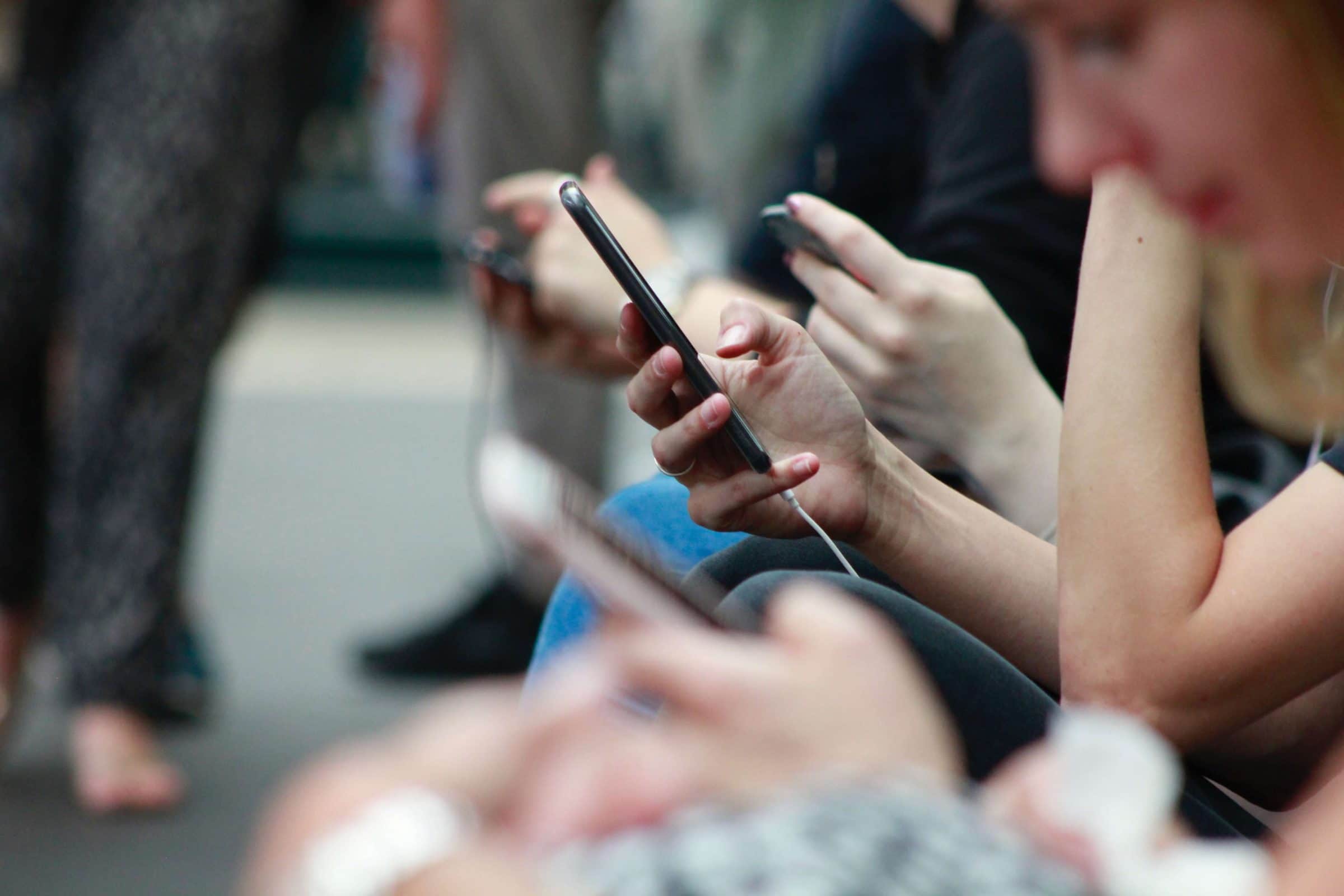What can you do with RCS?


You’ve heard a lot about Rich Communication Services (RCS). But do you know what it means for your business? Here are some things you’ll be able to achieve with this new native channel.
Send more engaging messages than ever before, with rich features
In today’s tech-central society, there are many channels out there that boast rich message features. But there is only one that actually has it in the name. Rich Communication Services (RCS) boasts the whole spectrum of media (including pictures, audio, videos and GIFs). It has branding in the form of a verified sender profile, name, logo and custom colours. It features typing indicators, delivery and read receipts; and website preview. It even has suggested reply and action buttons in the form of ‘chips’.
All of this is great, as 60% of surveyed users like having images, messages and key features all in one place. 83% of respondents are also attracted to RCS because it enables location services. This makes messages more relevant and dynamic, such as making recommendations based on the user’s locations, or offering a taxi service from the user’s exact co-ordinates that they share. This could be a ground-breaking feature for those in the leisure and hospitality industry.
Empower your customers with full features all in one place
There are many new features to RCS, but almost all of them have a shared goal: keeping customers in one place and therefore more engaged with content as a consumer. Worrying about click-through rates will become a thing of the past. Send a boarding pass, accept payments, display an interactive map or an array of products embedded in rich-card carousels, all while staying in RCS. But if you do need to take your customers to a browser, simply look to the success of a recent Vodafone campaign. It saw click-through rates using RCS 25 times higher than they experienced with SMS.
56% of consumers like being able to schedule appointments without leaving their inbox. 44% of current RCS users like it because they don’t have to download another mobile app to complete their tasks. This is unsurprising when you consider that 42% of consumers dislike switching between apps to contact different people or businesses. 43% of consumers also dislike switching between apps to use different communication tools.
Provide superior communication, with a low- to no-barrier entry
With 59% of consumers preferring to have their favourite communication functions built into their phone, and not as additional app to download, an important point to consider is the very low barrier to entry that RCS will provide. From a consumer perspective, with retroactive updates to most Android handsets and RCS coming as the standard messaging app on all new handsets, most people will not necessarily notice they have been upgraded to RCS. They’ll just notice that their standard messaging app suddenly now has more functionality. You will not have to rely upon your customers downloading the app manually. Although there’s no reason why they couldn’t before the retrofit reaches their phone. As if by magic, you will be able to start sending rich communication to them overnight. You’ll immediately be able to take advantage of the novelty of this new channel. Perhaps before their friends and family even do.
Have a conversation that your customer will remember
One of the most exciting opportunities for businesses with RCS is that now every message will come loaded with the potential to be a conversation. This is because of enabling faster response times, greater engagement and a better overall customer experience. From sending a PDF receipt, or a live update, to a marketing message. With RCS, you are easily allowing users to interact with you the same way they would with friends and family. This breaks down barriers of formality, therefore making them more receptive to your brand and marketing outcomes. Businesses should stop thinking of communications with their customers as a one-way message. They need to start thinking of every communication as a conversation and opportunity.
Using a native app will already make users psychologically primed to engage in a chat. But with the addition of ‘chips’ (smart-reply buttons), the ability to see when users are typing, and easy chatbot-integration, you can guide consumers to more conversions more effortlessly than ever before. After all, over half of all consumers already say it’s easier to communicate with a business over text than email. The perception is also that it’s quicker.
This is before most have even made the switch over to RCS which will improve things dramatically. 82% of current RCS users say they prefer RCS to SMS because of its additional functionality and utility. 83% saying they prefer hitting ‘action buttons’ to typing. Curiously, for those interested in conversational commerce, 61% are even attracted to the RCS capability to integrate with payments enabling ‘buy now’ transactions directly from the message. Switching from a one-way strategy to two-way might seem like you are going to have to apply extra resource. But with the right provider, your input will be hardly noticeable compared to your boost in ROI.
Be bot-ready for faster and more tailored customer experiences
No matter your communication needs and desired outcomes, a chatbot can help to inform, engage and convert your customers. All this, with little to no human effort. In a 2018 study, 89% of respondents showed an interest in the ability of RCS messages to enable automated, chatbot, conversational interaction with consumers.
Let’s say a user is enquiring about product that is out-of-stock. A bot can give them a date when it is expected to be back. They can offer to contact them when it is back, or offer up a selection of alternatives if they need it immediately. Or if a user needs to change an appointment or reservation. A bot can arrange this probably quicker than a human agent could. Resolving problems and inquiries quickly will be sure to increase customer satisfaction. And should the conversation start to run outside of what the bot can capably handle, a human agent can quickly take up the chat reigns.
RCS not only supports bot-integration, its features also compliment the use of a bot nicely. Bots can offer up carousel cards of products, services or information, enable users to purchase in-app, supply PDF tickets and receipts and use chips to facilitate fast conversation and resolution. Whereas before, users and your agents would have to be held up in lengthy and costly phone calls to manage all these agendas, they can now all be handled within a single-app. What’s more, at a fraction of the time and cost. With 61% of consumers saying they would engage with companies more if they offered a more personalised service, chatbots are a great way to take advantage of this consumer preference!
Increase brand trust
Fake news was at the epicentre of public-media relations in 2017. It therefore may come as no surprise that Gartner the same year predicted that by the year 2022, most people in mature economies will consume more false information than true. What does this have to do with RCS? Well, consumers have never been more cynical or cautious as a result. Businesses will have to respond with more trust-worthy communications or risk losing out on users who are not convinced by the legitimacy of the sender. 79% of consumers reported that company branding and verified IDs make them feel safer messaging a company. It was therefore essential that RCS provided this capability for businesses, and Google delivered.
Businesses enrol in a verification process that will provide them with a Google verified ‘agent’ profile. This displays additional company information such as website, email address and phone number to the user. The user can view this at any time during the conversation. It’s set up in much the same way as one verifies their website with Google analytics so should not be a time-consuming process.
RCS also allows companies to display their company name, choose a colour scheme for the conversation and display their logo in the same way a user would display their profile picture. These may seem like small things, but they go a long way to making users feel more secure. After all, 74% of people saying they are more likely to communicate with a brand using RCS. 86% indicate that branding shown to recipients as the sender ID (rather than a mobile number or a short code) is an advantage.
Increase user security
The addition of website preview is also crucial. This is so that users can view a link before clicking on it and be more confident in its security and validity. That is, if a link needs to be provided at all. Since so much of the RCS experience is about keeping users in-app as much as possible, it may not be necessary.
Then there is of course the question of the security of the data transferred over the channel. 66% of people worry about 3rd party apps accessing and misusing data. Fortunately, 67% of people agree that RCS is attractive because it offers enhanced security like end-to-end encryption. This rises to 80% within the financial services and public sectors. Furthermore, compared to OTT messaging apps like Facebook Messenger and WhatsApp where trust is typically quite low, 74% of people would trust mobile operators to use RCS. 64% would trust a telco-based service (such as RCS) more than chat apps to deliver business messaging.
Because of the increased trust and security that RCS offers, it also has great value in offering verification services. This is of course similar, but more enhanced to the way we currently use SMS. For example, businesses can use RCS for 2-factor verification. There is even the added featured of being able to copy and paste one-time passwords directly. Users don’t even need to open the message, just use smart button option. All of this offers much greater consumer ease, but without compromising on security.
Encourage commerce
Finally, there are many features of RCS that lend themselves beautifully to encouraging purchases directly in the app, increasing conversions and ROI. RCS will support Google Pay (and presumably other payment methods will become available as adoption becomes more common). This allows users to make payments securely with a few clicks. The carousel rich card template is perfect for displaying an assortment of products or services. These could be selected for them based on the user’s conversation with the agent or bot, such as placing an order from the menu in advance, booking additional hotel and spa services or selecting which handset a user would like next as their phone contract is up for renewal.
Best of all, unlike other OTT channels, RCS is only governed by the countries messaging regulations. This makes it very friendly for marketing communications. Especially for companies who have the edge on their competitors and use RCS while it is still an exciting novelty for users.

